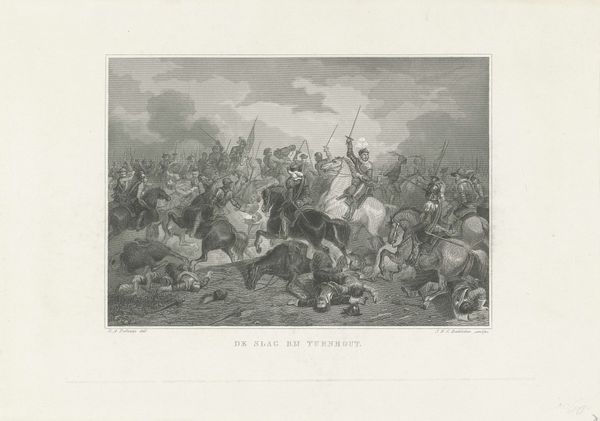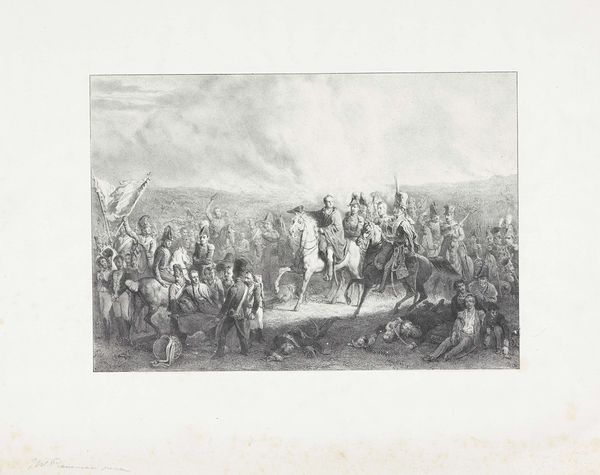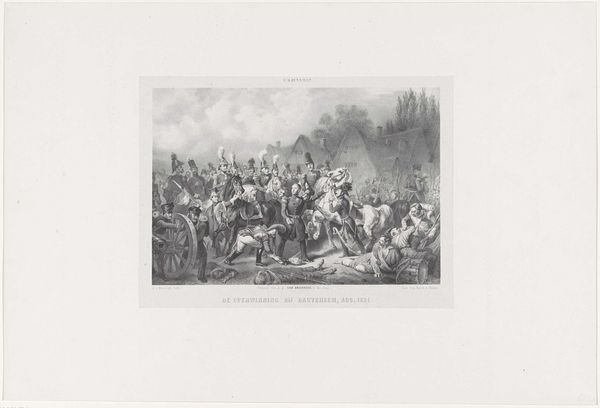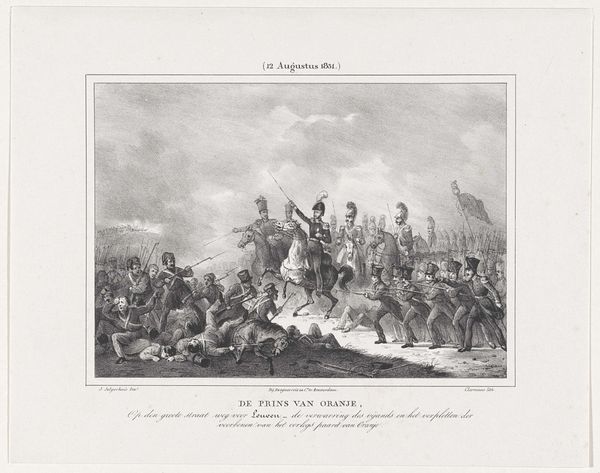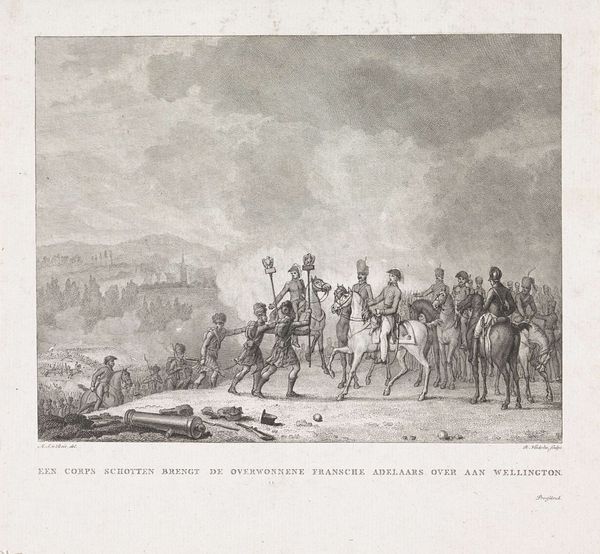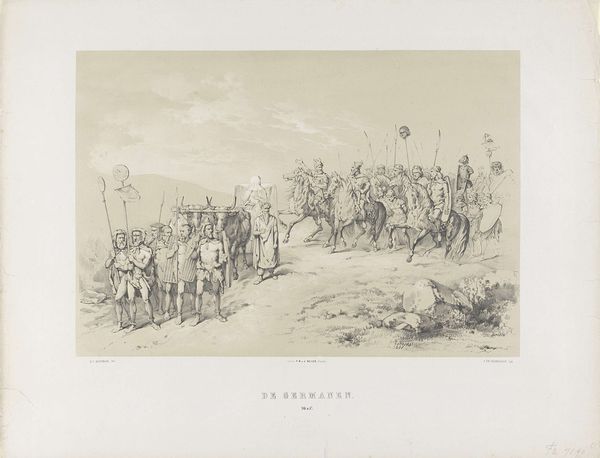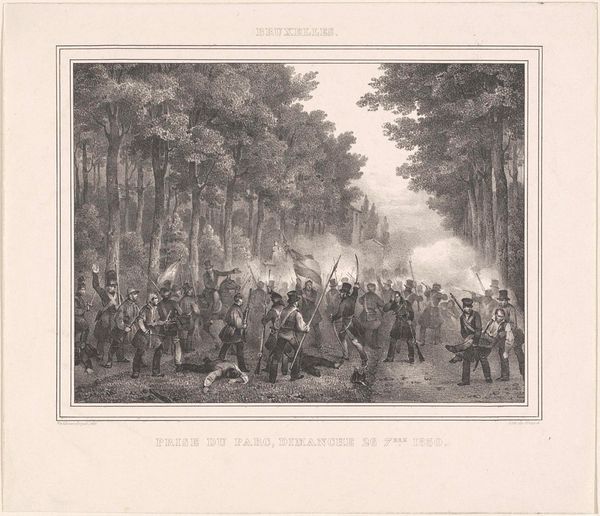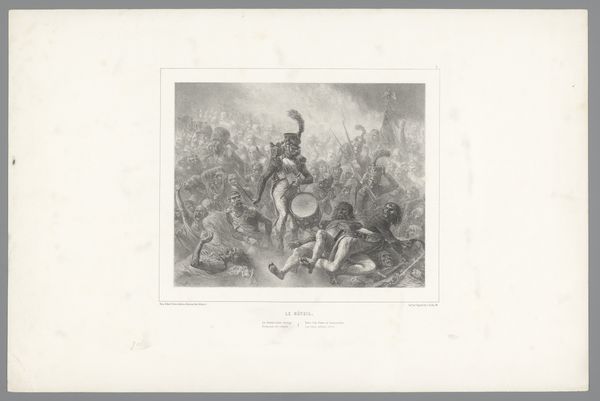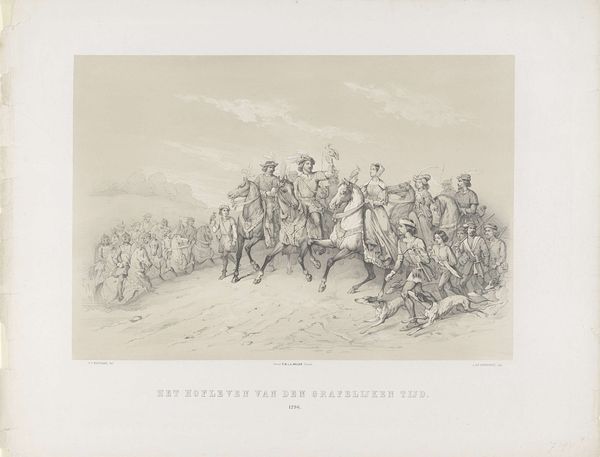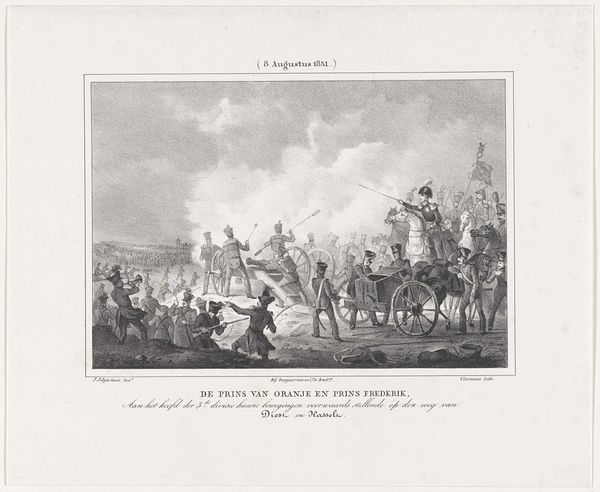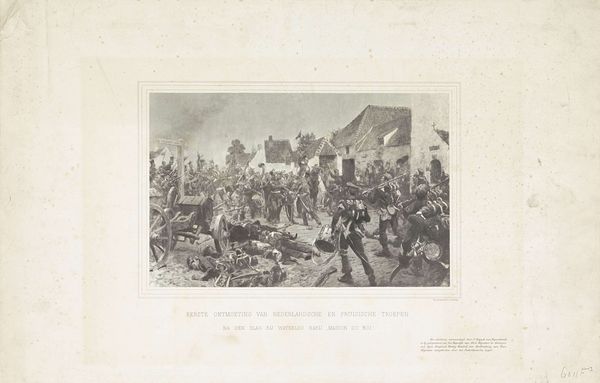
print, engraving
#
narrative-art
# print
#
landscape
#
figuration
#
romanticism
#
genre-painting
#
history-painting
#
academic-art
#
engraving
Dimensions: height 340 mm, width 450 mm
Copyright: Rijks Museum: Open Domain
Curator: Here we have an engraving dating from 1824-1850 entitled “Slag bij Waterloo, 1815,” which translates to “The Battle of Waterloo, 1815." Editor: The first thing that strikes me is the chaotic mass of bodies. There are so many figures, so much movement. And that heavy, almost oppressive sky pressing down. Curator: Yes, look at the precision employed through the engraving process! You can almost feel the grueling labor invested in depicting each individual soldier. The matrix itself is integral to understanding the image's inherent social value. Engravings like this democratized art, making historical events accessible beyond the elite circles. Editor: Absolutely, but those soldiers… Consider the uniforms, the weaponry – potent symbols of empire and the individuals caught within it. I keep coming back to that centralized figure on the horse, likely intended to represent a general or commander. His position raises many questions about the perceived importance of leadership and sacrifice. Curator: While one might fixate on commanders, the availability of mass-produced prints is really compelling. These battle scenes were essentially commercial products consumed and circulated widely, further cementing the memory of Waterloo within a popular audience. Did they perhaps sanitize some realities, shifting perspectives toward patriotism, national glory? Editor: Precisely. The cultural memory that’s created by the image is as relevant as the battle itself. Note how many individuals lie dead on the ground; death being used here to glorify the image's central figures while at the same time attempting to capture some semblance of truth. Curator: This is a really provocative illustration that asks us to unpack notions of artistic craftsmanship and mass media. A skilled artisan made these accessible visual products that reflected cultural norms in 19th century Europe. Editor: It reminds me how visual symbols continue to evolve in meaning through a society’s changing cultural lens. Waterloo became, and perhaps remains, a loaded word. Curator: Yes, and in many ways this very print participates in those changing cultural stories by shaping the tangible record of the war’s memory through affordable pictures. Editor: It’s been illuminating to explore this through a material lens, and I must admit, it does open a whole new line of inquiry regarding visual storytelling.
Comments
No comments
Be the first to comment and join the conversation on the ultimate creative platform.
